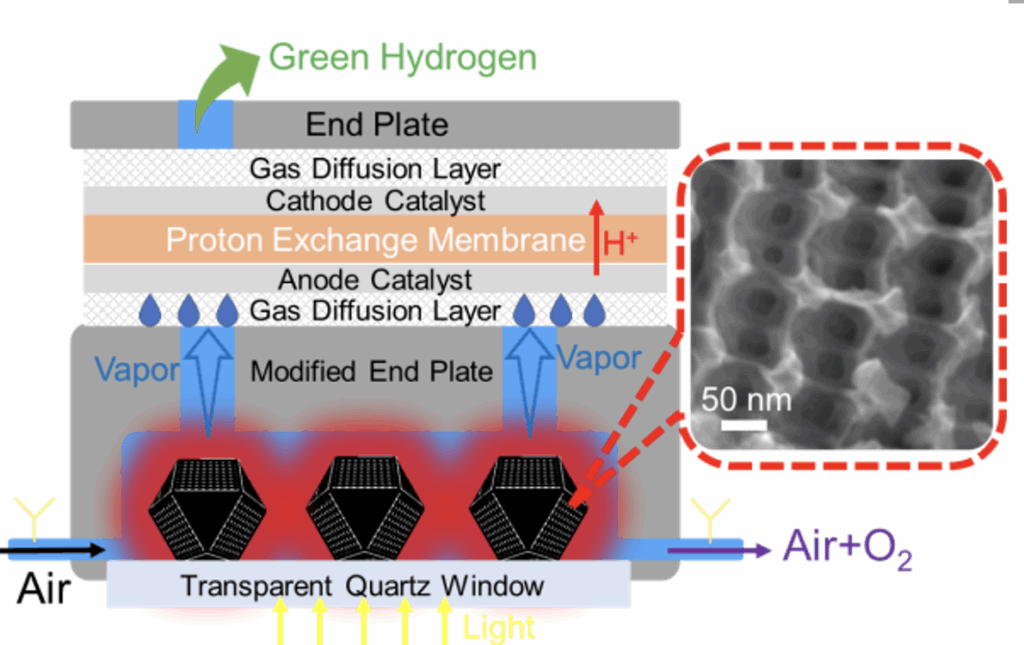https://www.cas.cn/syky/202509/t20250909_5081772.shtml
https://advanced.onlinelibrary.wiley.com/doi/10.1002/adma.202511336
A team at the Institute of Solid State Physics, CAS Hefei Institutes of Physical Science, has proposed a self-driven photothermal air-water harvesting-PEM electrolysis system. This system uses ordered hierarchical porous carbon as an air-water harvesting adsorbent and is coupled with a modified electrolyzer to achieve an air-water harvesting-photothermal evaporation-photodriven electrolysis process. The adsorbent’s hierarchical pore structure is constructed through a template method and high-temperature calcination, and its hydrophilicity is enhanced through surface oxidation. Research has shown that at a relative humidity of 40%, it can achieve a water absorption rate of 0.49 liters per kilogram of adsorbent per hour. Even in an arid environment with a relative humidity of 20%, it maintains stable moisture absorption and photothermal evaporation performance. Under indoor simulated conditions, the system achieved a green hydrogen production rate of 295.5 ml/hour when operated at a constant voltage of 1.65 V, demonstrating excellent cycle stability and long-term operational reliability. Field testing results show that the system requires no external heating or additional energy input, achieving fully solar-driven, zero-carbon green hydrogen production.
PEM water electrolysis process relies on highly pure water as a reaction feedstock, limiting its application. Air-water harvesting, as a new approach to obtaining pure water, is expected to provide a solution to the water shortage problem in green hydrogen production.
Related research results were published in Advanced Materials. This work was supported by the National Natural Science Foundation of China and other institutions.
Self-driven system for air water harvesting and proton exchange membrane water electrolysis based on ordered porous carbon
(a) Air water harvesting performance of the adsorbent at different relative humidities; (b) Indoor simulated solar-driven experiment; (c) Field observation experiment

